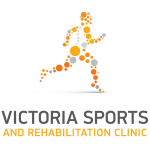Exercise is extremely important for everyone, especially for women after having a baby. Exercise can not only help assist your body in recovering from a vaginal delivery or re-strengthen the core following a cesarean section but for improving energy levels, overall mental health and mood. Every pregnancy is different, so it is important to speak to a practitioner for individualised care, but here are some general tips to keep safely active.
Pregnancy puts lots of added pressure on the body and creates a vast amount of biomechanical change. These changes can return to your pre pregnancy state slowly and exercise can be a great way of helping you through the process. However it is important to remember that lifestyle factors, posture and routines completely change when caring for a newborn, especially with feeding (whether breast or bottle), so exercise needs to be tailored accordingly. The hormones that are increased in pregnancy and breastfeeding are designed to soften the ligaments to help allow the body to do what is required, which means that you need to be careful with your choice of movement. Because of this softening, an increased pressure is applied to the pelvic organs, including the bladder. Bladder leakage and an increased frequency in urination are commonly experienced in both pregnant and postpartum women, however lots can be done to help improve it!
Pelvic Floor exercises are designed to help strengthen the muscular support of the organs and have been shown to help support the bladder. The best thing about these exercises is that they are easy to do and can be done at any time during pregnancy or postpartum from 1-2 days following a cesarean section vaginal birth. However if anything hurts, please stop immediately. Start with slow activations, small hold and slow release. We like to work with a 3 second lift, 3 second hold, 3 second release. Complete this sequence 10 times, 3-4 times per day. This helps strengthen the slow twitch muscle fibres of the pelvic floor that are used for postural support and activate with sitting, standing and walking. As you begin to feel stronger, these exercises can be progressed and varied to help strengthen the fast twitch fibres which are more helpful in the event of a jump, cough or sneeze.
It is also vital to have your core assessed prior to commencing any new exercise routine to determine your level (if any) of stomach separation which is common during pregnancy. If a separation or diastasis recti is found, you will be given specific exercises to help repair this.
The two most important things are to not over do it and listen to your body. If you are having a bad day or are extremely tired and fatigued, listen to your body, especially after a caesarean section. A caesarean can take at least 6 weeks to heal, so walking is the safest exercise for you to do. When you feel like it, start with a gentle walk but avoid carrying the baby at the same time. When you start feeling stronger gradually increase the length or speed of the walks but don’t try and do both at the same time and even if you are feeling great, try and avoid strenuous exercise for at least 12 weeks following the birth.
Swimming can also be a great exercise as there is low impact on the back and pelvis, however it is only safe to commence once bleeding has stopped for at least 7 days and you have had your postnatal checks with your doctor, which is usually around 6-8 weeks following the birth. Light weights or resistance band exercises are also fantastic to help tone muscles and increase overall strength. Clinical Pilates and supervised rehabilitation are also fantastic to help speed up recovery and exercise in an extremely supported way, so please speak to one of our Osteopaths if you are thinking about starting this and we can help you make the transition. Our Osteopaths run small group classes within the clinic which can be baby friendly, but they can also write you programs to complete at home in your own time. It is really important that whatever exercise program you chose to start is supported by your healthcare professionals and has been tailored to your body. This will help prevent injury and strains but also help you achieve your goals more quickly. So please have a chat to one of us next time you are in and we can help get you on your way to feeling better again!
This article is for information only, for a diagnosis and treatment of a musculoskeletal condition consult your Osteopath or primary healthcare professional.
